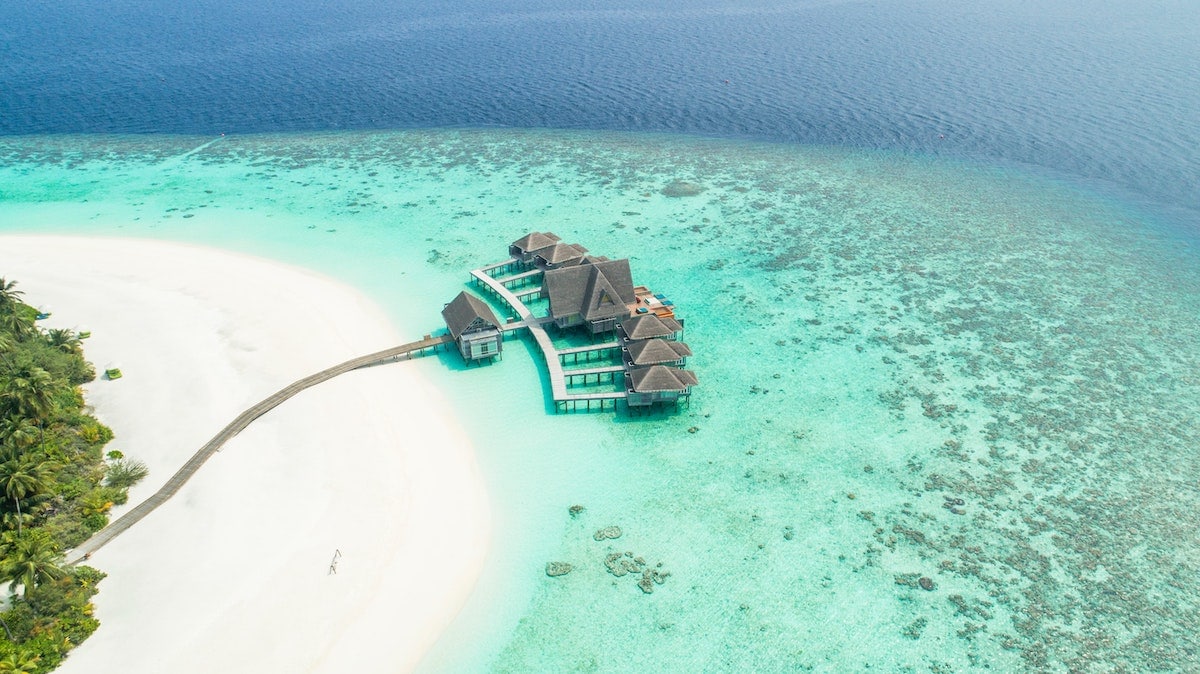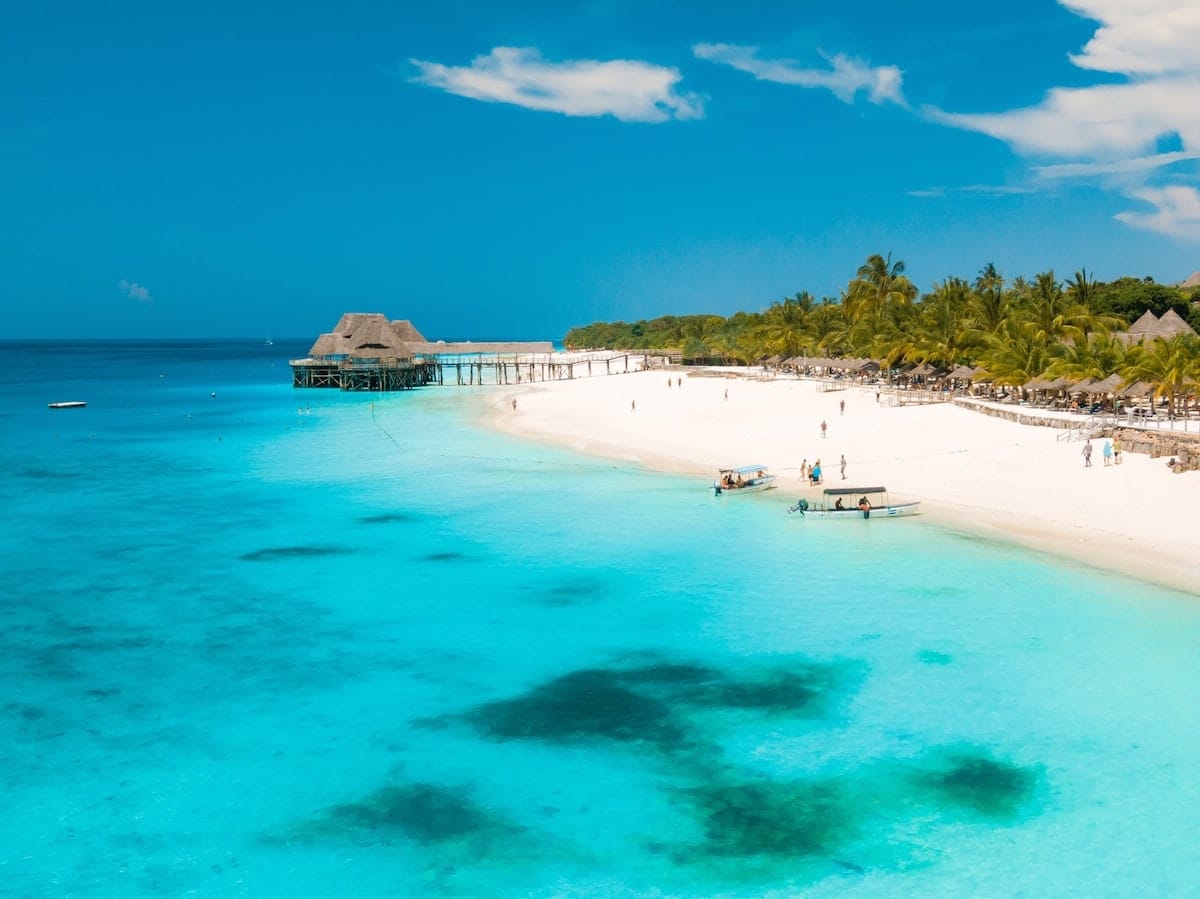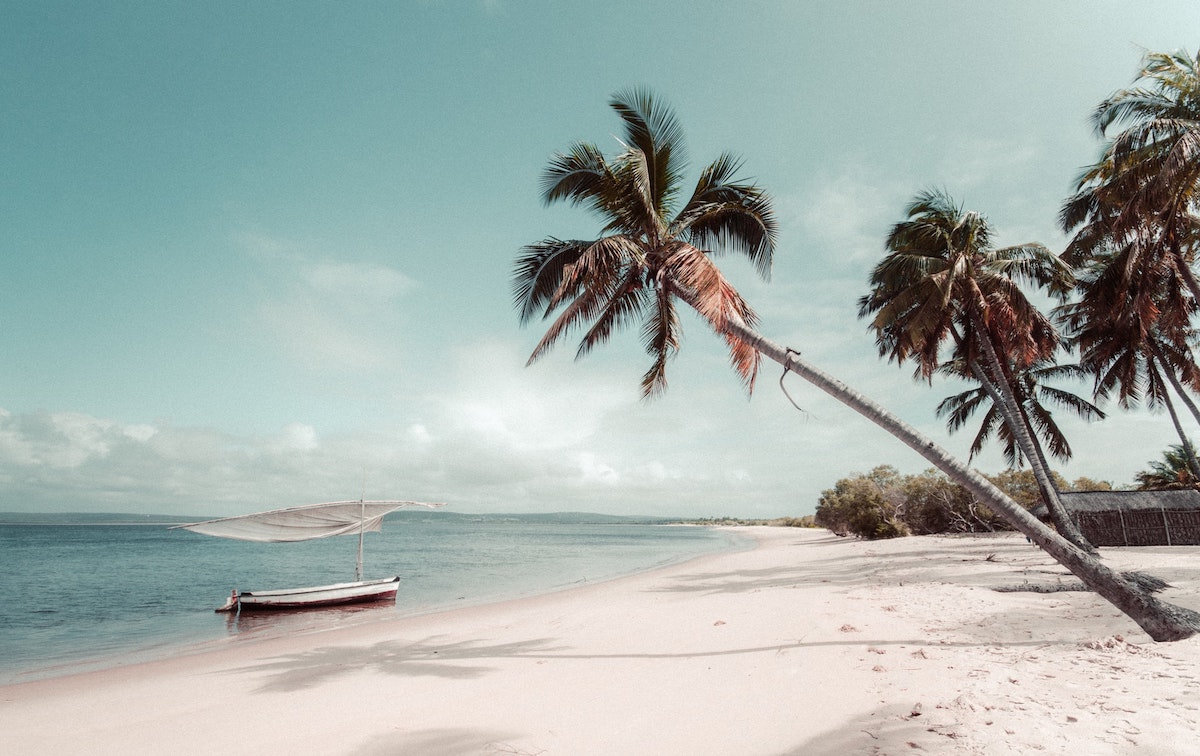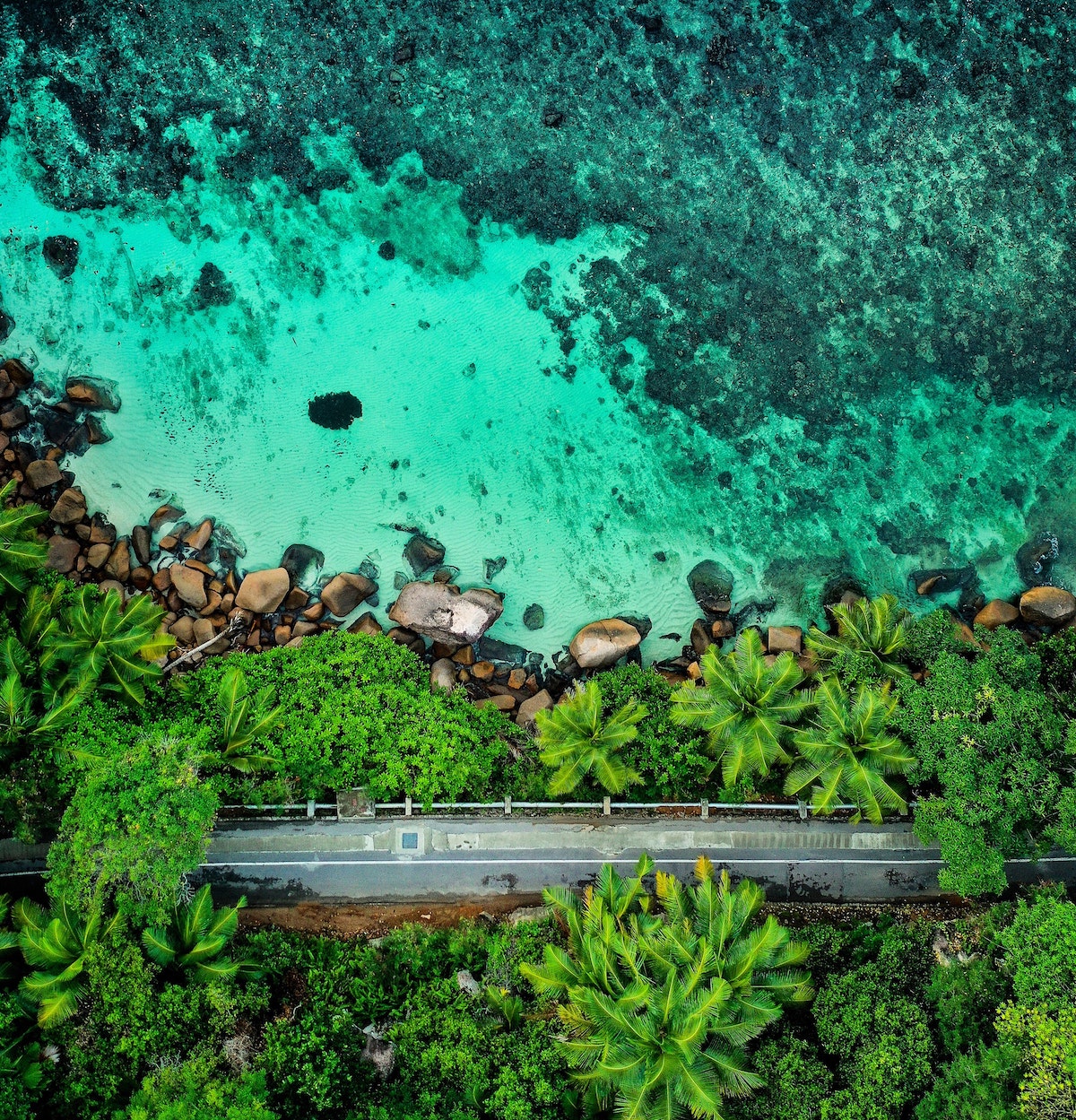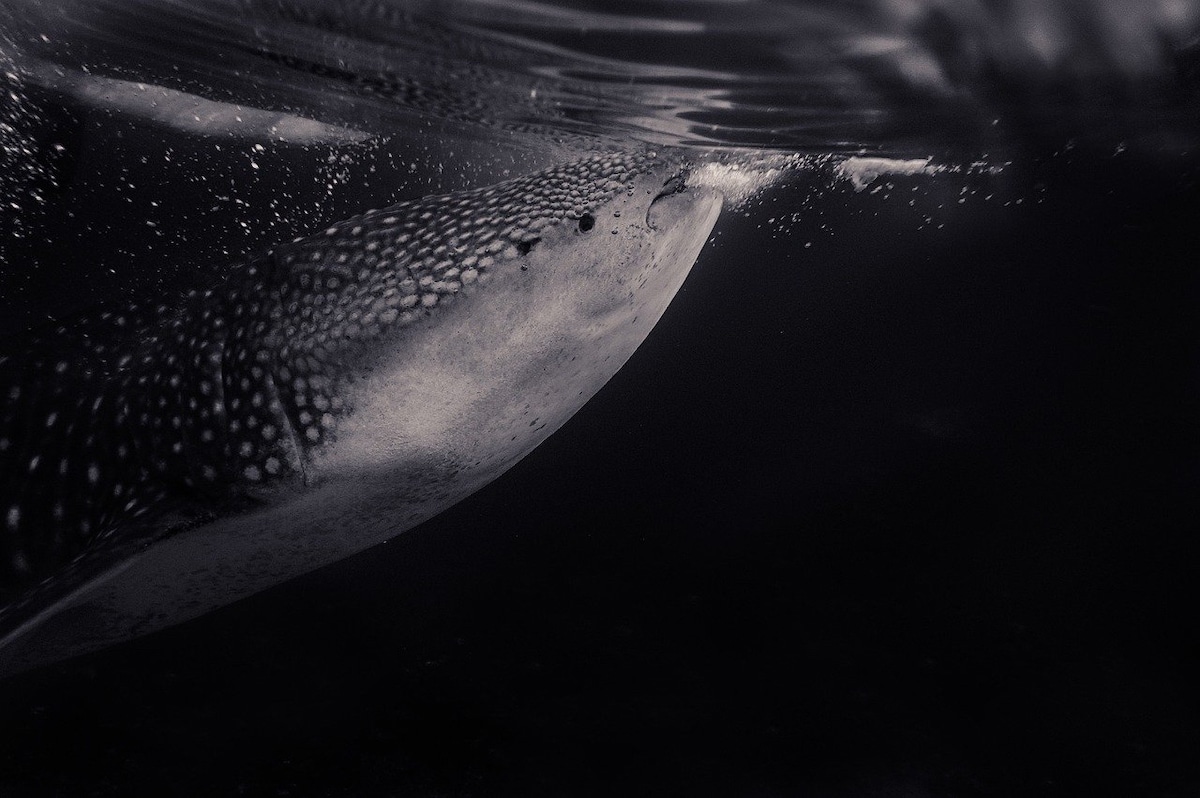Marine Life & Conservation Blogs
14 idyllic places to swim with Whale Sharks
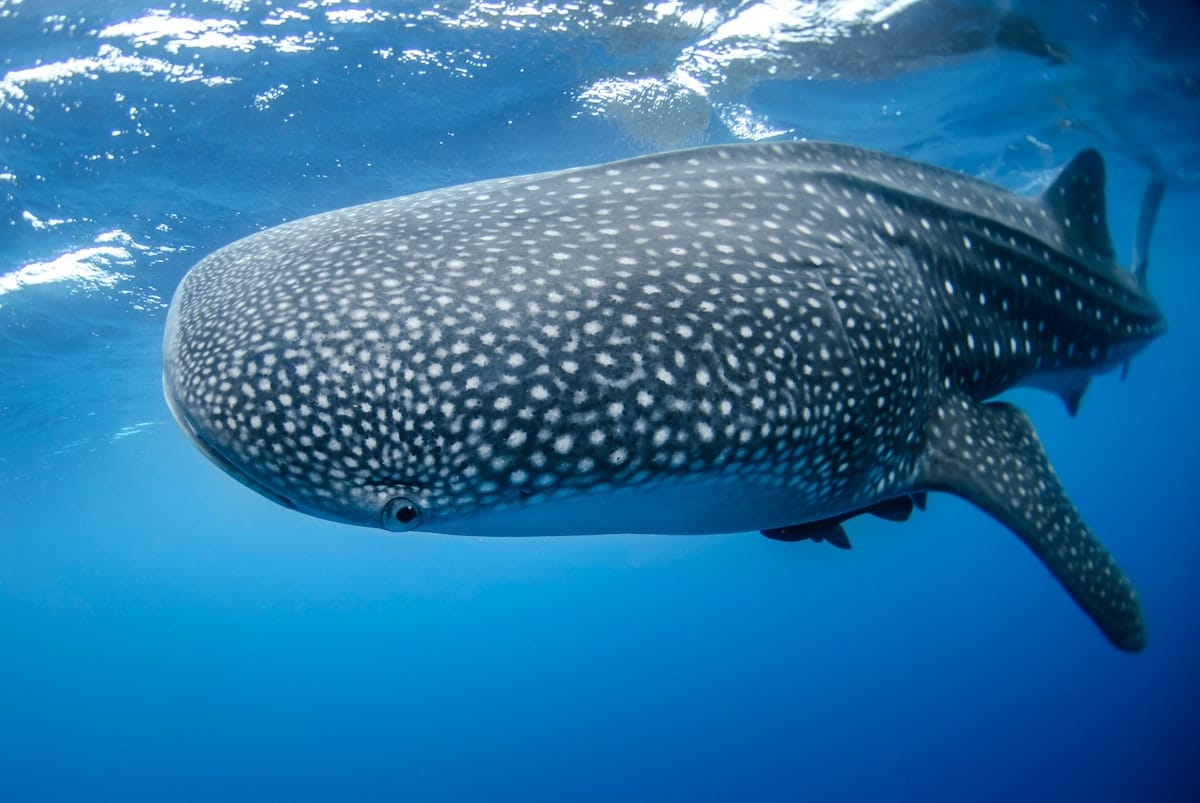
It’s International Whale Shark Day today, 30th August – a day dedicated to celebrating the biggest fish in the ocean. These much-loved gentle giants are amazing to swim with and you can find them at top diving and snorkeling destinations around the world. Here is our round up of 14 idyllic places to swim with whale sharks.
1) Cenderawasih Bay, Indonesia
This famous dive destination in Raja Ampat is renowned for the unique relationship between the whale sharks and fishermen that live there. The fishermen give fish to the whale sharks to bring luck and there are numerous resident whale sharks there year-round. The sharks are used to people in the water, meaning you can swim alongside them to your heart’s content.
Snorkel or scuba dive? Both.
Experience needed: Intermediate if you plan to enjoy the other scuba diving highlights of Cenderawasih Bay.
When to go: July to September
2) Djibouti
This little-known dive destination at the southwestern tip of the Red Sea is crowd-free and offers the chance to dive with juvenile whale sharks. Djibouti’s rich waters attract whale sharks in numbers to the coastline each year, where divers and snorkelers commonly see them.
Snorkel or scuba dive? Both, though mostly snorkeling excursions.
Experience needed: All experience levels.
When to go: Whale sharks can be seen all year, though September, October and February offer the best conditions for peak numbers.
3) Isla Mujeres, Mexico
Isla Mujeres, a picture-perfect island in the Caribbean Sea, is Mexico’s best-known whale shark diving hotspot and has one of the highest concentrations of whale sharks in the world. Various locals operators will take you snorkeling with the sharks, and you can enjoy some of Mexico’s best diving and snorkeling at nearby Cancun and Cozumel.
Snorkel or scuba dive? Snorkel.
Experience needed: All experience levels.
When to go: May to September. July and August are peak whale shark season.
4) Socorro Islands, Mexico
The remote Socorro Islands off the coast of Mexico take time to get to, but they host more ocean giants than you could ever hope to see, including whale sharks, humpback whales, giant Pacific manta rays and bottlenose dolphins. This is Mexico’s premier liveaboard diving destination and doesn’t disappoint for marine megafauna and whale shark fans.
Snorkel or scuba dive? Scuba dive.
Experience needed: Intermediate and experienced divers.
When to go: November and December for whale sharks.
5) The Maldives
Diving in the Maldives is synonymous with whale sharks and they are found at this idyllic destination all year. South Ari Atoll’s waters are busy with juvenile whale sharks, though Huvadhoo and Thaa atolls are also great places to snorkel and dive with these spotty giants.
Snorkel or scuba dive? Both.
Experience needed: All experience levels.
When to go: All year.
6) Ningaloo Reef, Australia
Hundreds of whale sharks gather at Ningaloo Reef each year, making it Australia’s prime destination for snorkeling with whale sharks. As well as being a UNESCO World Heritage area with stunning dive sites and zero crowds, the Ningaloo Coast also has seasonal sharks, humpback whales, mantas and sea turtles in abundance.
Snorkel or scuba dive? Snorkel.
Experience needed: All experience levels.
When to go: March to June for whale sharks.
7) Thailand
If you want an affordable dive destination with the chance to see whale sharks, go diving in Thailand. Whether you dive at world-famous Richelieu Rock in the Andaman Sea or explore around the Gulf of Thailand’s many islands, there are numerous world-class dive sites and a good chance you will see whale sharks.
Snorkel or scuba dive? Scuba dive.
Experience needed: There are dives for all experience levels in Thailand.
When to go: February to April for whale shark season at Richelieu Rock.
8) Cocos Island, Costa Rica
Known as the ‘Little Galapagos’, Cocos Island in Costa Rica has fantastic shark diving with huge schools of hammerheads. This incredible island’s rich waters also host whale sharks, abundant manta rays, reef sharks and dolphins.
Snorkel or scuba dive? Scuba dive.
Experience needed: Intermediate and experienced divers.
When to go: June to November for whale sharks.
9) Mafia, Tanzania
Mafia Island in Tanzania has one of the longest whale shark seasons globally and is home to more than 180 resident whale sharks. The whale sharks are seen year-round and feed in the shallow waters off the western side of Mafia Island, making it easy to go swimming with them.
Snorkel or scuba dive? Snorkel.
Experience needed: All experience levels.
When to go: October to March for whale sharks.
10) Tofo Beach, Mozambique
Whale sharks roam the plankton-rich waters off Tofo Beach in Mozambique all year long. As many as 50 whale sharks can be seen at any one time and there are numerous mantas, dolphins and sea turtles to find at this picture-perfect beach destination. Way off the beaten track, this is a hidden whale shark hotspot.
Snorkel or scuba dive? Snorkel.
Experience needed: All experience levels.
When to go: October to March for whale sharks.
11) The Galapagos Islands, Ecuador
Galapagos diving is paradise for nature fans and offers endless highlights above and below the water line, including encounters with whale sharks. Wolf and Darwin Islands are the best places to dive with whale sharks, where you will find them at the surface and at depth.
Snorkel or scuba dive? Scuba dive.
Experience needed: Intermediate and experienced divers.
When to go: June to October for whale sharks.
12) Seychelles
If you want to combine whale sharks encounters with sailing calm seas, coral reef diving and water sports, visit the Seychelles. These stunning islands are perfect for families, honeymooners and adventurous souls alike, and have plenty of whale sharks off Mahé Island.
Snorkel or scuba dive? Snorkel.
Experience needed: All experience levels.
When to go: October for whale sharks.
13) Utila, Honduras
Sitting within the expansive Mesoamerican Barrier Reef, Utila’s waters are teeming with tropical fish life and host whale sharks all year. This tiny island is famous as the Whale Shark Capital of the Caribbean and offers a range of whale shark swimming safaris.
Snorkel or scuba dive? Snorkel.
Experience needed: All experience levels.
When to go: Year-round, with peak whale shark season from March to April.
14) Nosy Be, Madagascar
Madagascar is a relatively new whale shark hotspot that came to the world’s attention in 2018, when researchers discovered juvenile whale sharks swim to Madagascar to feed. These charming sharks are seen primarily around the small island of Nosy Be, in northwest Madagascar.
Snorkel or scuba dive? Snorkel.
Experience needed: All experience levels.
When to go: September and December for whale sharks.
Kathryn Curzon, a shark conservationist and dive travel writer for Scuba Schools International (SSI), wrote this article.
Blogs
Invitation from The Ocean Cleanup for San Francisco port call

6 years ago, The Ocean Cleanup set sail for the Great Pacific Garbage Patch with one goal: to develop the technology to be able to relegate the patch to the history books. On 6 September 2024, The Ocean Cleanup fleet returns to San Francisco bringing with it System 03 to announce the next phase of the cleanup of the Great Pacific Garbage Patch and to offer you a chance to view our cleanup system up-close and personal.
We look forward to seeing you there.
To confirm your presence, please RSVP to press@theoceancleanup.com
PROGRAM
Join The Ocean Cleanup as our two iconic ships and the extraction System 03 return to San Francisco, 6 years and over 100 extractions after we set sail, to create and validate the technology needed to rid the oceans of plastic.
Our founder and CEO, Boyan Slat, will announce the next steps for the cleanup of the Great Pacific Garbage Patch. Giving you a chance to view our cleanup system and the plastic extracted.
Hear important news on what’s next in the mission of The Ocean Cleanup as it seeks to make its mission of ridding the world’s oceans of plastic an achievable and realistic goal.
Interviews and vessel tours are available on request.
PRACTICALITIES
Date: September 6, 2024
Press conference: 12 pm (noon)
Location: The Exploratorium (Google Maps)
Pier 15 (Embarcadero at Green Street), San Francisco, CA
Parking: Visit The Exploratorium’s website for details.
RSVP: press@theoceancleanup.com
Video & photo material from several viewing spots around the bay
We look forward to seeing you there!
ABOUT THE OCEAN CLEANUP
The Ocean Cleanup is an international non-profit that develops and scales technologies to rid the world’s oceans of plastic. They aim to achieve this goal through a dual strategy: intercepting in rivers to stop the flow and cleaning up what has already accumulated in the ocean. For the latter, The Ocean Cleanup develops and deploys large-scale systems to efficiently concentrate the plastic for periodic removal. This plastic is tracked and traced to certify claims of origin when recycling it into new products. To curb the tide via rivers, The Ocean Cleanup has developed Interceptor™ Solutions to halt and extract riverine plastic before it reaches the ocean. As of June 2024, the non-profit has collected over 12 million kilograms (26.4 million pounds) of plastic from aquatic ecosystems around the world. Founded in 2013 by Boyan Slat, The Ocean Cleanup now employs a broadly multi-disciplined team of approximately 140. The foundation is headquartered in Rotterdam, the Netherlands, and opened its first regional office in Kuala Lumpur, Malaysia, in 2023.
Find out more about The Ocean Cleanup at www.theoceancleanup.com.
Blogs
Smart Shark Diving: The Importance of Awareness Below the Surface

By: Wael Bakr
Introduction to Shark Diving Awareness
In the realm of marine life, few creatures captivate our interest, and sometimes our fear, like the shark. This fascination often finds a home in the hearts of those who venture beneath the waves, particularly scuba divers who love shark diving. It’s here that shark awareness takes the spotlight. Shark awareness is not just about understanding these magnificent creatures; it’s about fostering respect, dispelling fear, and promoting conservation. As Jacques Cousteau once said, “People protect what they love.” And to love something, one must first understand it.
Shark awareness is not a mere fascination; it’s a responsibility that we owe to our oceans and their inhabitants. From the smallest reef shark to the colossal great white, each species plays a crucial role in the underwater ecosystem. Our understanding and appreciation of these creatures can help ensure their survival.
However, shark awareness isn’t just about protecting the sharks; it’s also about protecting ourselves. As scuba divers, we share the underwater world with these magnificent creatures. Understanding them allows us to dive safely and responsibly, enhancing our experiences beneath the waves.
Importance of Shark Awareness in Scuba Diving
The relevance of shark awareness in scuba diving cannot be overstated. Sharks, like all marine life, are an integral part of the underwater ecosystem. Their presence and behavior directly influence our experiences as divers. By understanding sharks, we can better appreciate their role in the ocean, anticipate their actions, and reduce potential risks.
Awareness is crucial for safety when shark diving. Despite their often-misunderstood reputation, sharks are generally not a threat to humans. However, like any wild animal, they can pose risks if provoked or threatened. By understanding shark behavior, we can identify signs of stress or aggression and adjust our actions accordingly. This not only protects us but also respects the sharks and their natural behaviors.
Moreover, shark awareness enriches our diving experiences. Observing sharks in their natural habitat is a thrilling experience. Understanding them allows us to appreciate this spectacle fully. It’s not just about seeing a shark; it’s about understanding its role in the ecosystem, its behavior, and its interaction with other marine life. This depth of knowledge adds a new dimension to our diving experiences.
Understanding Shark Behavior: The Basics
The first step in shark awareness is understanding shark behavior. Sharks are not the mindless predators they are often portrayed to be. They are complex creatures with unique behaviors and communication methods. Understanding these basics can significantly enhance our interactions with them.
Sharks communicate primarily through body language. By observing their movements, we can gain insights into their mood and intentions. For example, a relaxed shark swims with slow, fluid movements. In contrast, a stressed or agitated shark may exhibit rapid, jerky movements or other signs of discomfort such as gill flaring.
Sharks also use their bodies to express dominance or assertiveness. A dominant shark may swim with its pectoral fins pointed downwards, while a submissive shark may swim with its fins flattened against its body. Understanding these signals can help us interpret shark behavior accurately and respond appropriately.
How Shark Awareness Enhances Scuba Diving Experiences
Shark awareness significantly enhances our scuba diving experiences. It transforms encounters with sharks from mere sightings into meaningful interactions. Knowledge is power, and in this case, it’s the power to appreciate, respect, and safely interact with one of the ocean’s most fascinating inhabitants.
A thorough understanding of behavior when shark diving allows us to interpret their actions and responses accurately. It enables us to recognize signs of stress or aggression and adjust our behavior accordingly. This not only ensures our safety but also promotes responsible interactions that respect the sharks and their natural behaviors.
Furthermore, shark awareness adds a new layer of depth to our diving experiences. It’s one thing to see a shark; it’s another to understand its behavior, its role in the ecosystem, and its interactions with other marine life. This depth of understanding enriches our experiences and fosters a deeper appreciation for our underwater world.
Misconceptions About Sharks: Busting the Myths
Unfortunately, sharks are often misunderstood, feared, and even demonized. These misconceptions can be detrimental, not only to our experiences as divers but also to shark conservation efforts. As part of shark awareness, it’s important to debunk these myths and present sharks in their true light.
First and foremost, sharks are not mindless killing machines. They are complex creatures with unique behaviors and communication methods. They are not interested in humans as prey and, in most cases, prefer to avoid us.
Secondly, not all sharks are dangerous. Out of over 500 species of sharks, only a handful are considered potentially harmful to humans. Most sharks are harmless, and even those that can pose a threat are unlikely to attack unless provoked.
Lastly, sharks are not invincible. They are vulnerable to a host of threats, most notably human activities such as overfishing and habitat destruction. They need our understanding and protection, not our fear and persecution.
Shark Behavior: What to Expect When Scuba Diving
When scuba diving, it’s important to know what to expect from sharks. Most encounters with sharks are peaceful and awe-inspiring. However, as with any wild animal, it’s essential to be prepared and understand their behavior.
Most sharks are shy and cautious creatures. They are likely to observe you from a distance, often circling around to get a better look. This is normal behavior and not a sign of aggression.
However, if a shark becomes agitated or feels threatened, it may exhibit signs of stress such as rapid, jerky movements or gill flaring. In such cases, it’s essential to remain calm, avoid sudden movements, and slowly retreat if possible.
Remember, every encounter with a shark is an opportunity to observe and learn. With understanding and respect, these encounters can be safe, enriching, and truly unforgettable experiences.
Practical Tips for Shark Awareness During Scuba Diving
Being aware of sharks during scuba diving is about more than just understanding their behavior. It’s about applying this knowledge in practical ways to ensure safe and respectful interactions. Here are a few tips for shark awareness during scuba diving.
Firstly, always observe sharks from a safe distance. Avoid approaching them directly or making sudden movements, as this can startle or threaten them.
Secondly, never attempt to touch or feed sharks. This can disrupt their natural behavior and potentially put you at risk.
Lastly, always respect the sharks and their environment. Avoid disturbing their habitat or interfering with their natural behaviors. Remember, we are visitors in their world.
Promoting Shark Conservation through Scuba Diving
Scuba diving offers a unique platform for promoting shark conservation. As divers, we have the privilege of witnessing the beauty and complexity of sharks firsthand. We can share these experiences with others, fostering understanding and appreciation for these magnificent creatures.
Moreover, we can actively contribute to shark conservation. Many diving operators offer opportunities to participate in shark research and conservation initiatives. By participating in these programs, we can help ensure the survival of sharks for future generations.
Lastly, we can advocate for sharks. By sharing our knowledge and experiences, we can help dispel misconceptions about sharks and promote their protection. Every voice counts in the fight for shark conservation.
Courses and Resources for Shark Awareness and Behavior
There are many resources available for those interested in shark awareness and behavior. Scuba Diving International as well as numerous conservation-based organizations offer courses and workshops on shark biology, behavior, and conservation. These courses provide in-depth knowledge and practical skills for interacting with sharks responsibly and safely. From courses like our Marine Ecosystems Awareness Specialty and our Advanced Adventure Certification provide you with the information you need to tackle this new challenge!
Additionally, there are many online resources available, including websites, blogs, and forums dedicated to shark awareness and conservation. These platforms offer a wealth of information and a community of like-minded individuals passionate about sharks.
I encourage anyone interested in sharks to explore these resources, to sign up for one of SDI’s courses call your local dive center or instructor or reach out to your regional representative/ World HQ to find where the class is being taught near you. Knowledge is the first step towards understanding, appreciation, and conservation.
Conclusion: The Role of Shark Awareness in Future Scuba Diving Experiences
As we look to the future, the role of shark awareness in scuba diving will only continue to grow. As our understanding of these magnificent creatures deepens, so too will our appreciation and respect for them. This knowledge will shape our interactions with sharks, enhancing our experiences and promoting responsible and respectful behavior.
Shark awareness is more than just an interest; it’s a responsibility. It’s a commitment to understanding, respecting, and protecting one of the ocean’s most fascinating inhabitants. And it’s a journey that I invite all divers to embark on.
As we dive into the blue, let’s dive with awareness. Let’s dive with respect. And let’s dive with a commitment to understand and protect our underwater world. For in the end, the ocean’s health is our health, and every creature within it, including the sharks, plays a crucial role in maintaining this delicate balance.
-

 Blogs2 months ago
Blogs2 months agoDiving With… Nico, Ocean Earth Travels, Indonesia
-

 News1 month ago
News1 month agoMurex Bangka Announce New Oceanfront Cottages & Beachfront Dining
-

 Blogs2 months ago
Blogs2 months agoA new idea in freediving from RAID
-

 Marine Life & Conservation1 month ago
Marine Life & Conservation1 month agoIceland issue millionaire whale hunter a licence to murder 128 vulnerable fin whales
-

 Marine Life & Conservation2 months ago
Marine Life & Conservation2 months agoThe Shark Trust Great Shark Snapshot is back
-

 News3 months ago
News3 months agoCharting New Waters; NovoScuba Goes Global with the Launch of their Revolutionary Dive Training Agency!
-

 Gear News1 month ago
Gear News1 month agoNew Suunto Ocean – a dive computer and GPS sports watch in one for adventures below and above the surface
-

 Marine Life & Conservation Blogs2 months ago
Marine Life & Conservation Blogs2 months agoBook Review: Plankton



